TIOBE Index for July 2015
July Headline: Revival of C++
Programming language C++ is the biggest climber of the first half of 2015. Compared to last year C++ gained more than 3.1%, leaving Java (+2.0%), C# (+1.6%) and Python (+1.6%) behind. The reason for this renewed popularity is most probably the introduction of the new C++11 standard, which is fully embraced by its community. The new C++11 standard improves the C++ programming language in many ways. Now that the most important C++ compilers such as Gcc, Visual Studio and EDG are supporting the standard to the max, C++ is booming.
The TIOBE Programming Community index is an indicator of the popularity of programming languages. The index is updated once a month. The ratings are based on the number of skilled engineers world-wide, courses and third party vendors. Popular search engines such as Google, Bing, Yahoo!, Wikipedia, Amazon, YouTube and Baidu are used to calculate the ratings. It is important to note that the TIOBE index is not about the
best programming language or the language in which
most lines of code have been written.
The index can be used to check whether your programming skills are still up to date or to make a strategic decision about what programming language should be adopted when starting to build a new software system. The definition of the TIOBE index can be found here.
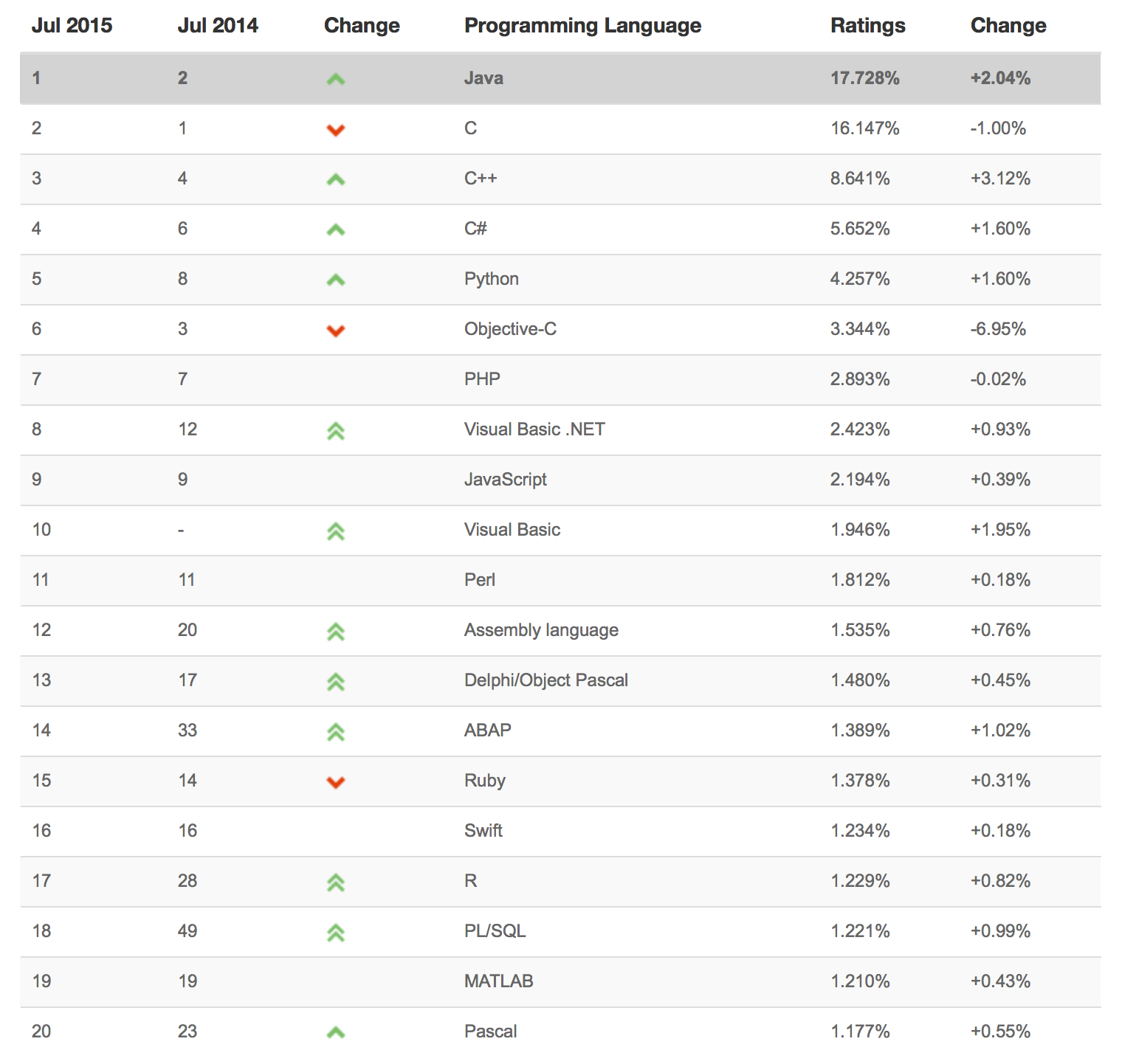 Other programming languages
Other programming languages
The complete top 50 of programming languages is listed below. This overview is published unofficially, because it could be the case that we missed a language. If you have the impression there is a programming language lacking, please notify us at tpci@tiobe.com. Please also check the overview of all programming languages that we monitor.
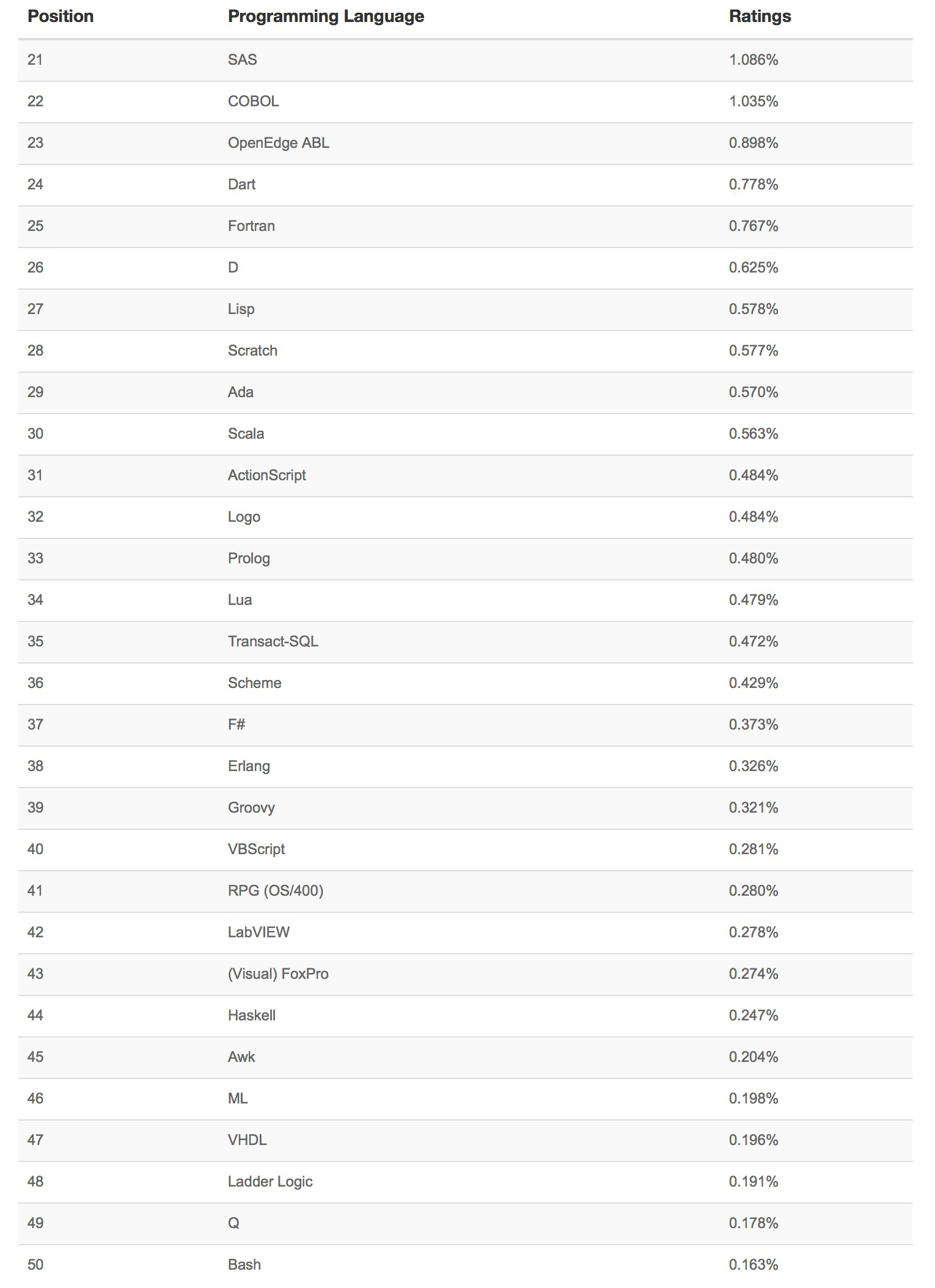 The Next 50 Programming Languages
The Next 50 Programming Languages
The following list of languages denotes #51 to #100. Since the differences are relatively small, the programming languages are only listed (in alphabetical order).
▪ 4th Dimension/4D, ABC, Alice, Apex, APL, AutoLISP, Automator, Bourne shell, C shell, Caml, CL (OS/400), Clojure, Common Lisp, Eiffel, Emacs Lisp, Etoys, EXEC, Forth, GNU Octave, Go, Haxe, Icon, IDL, Inform, Io, Ioke, J, JADE, Korn shell, Magic, Mathematica, Modula-2, MQL4, MUMPS, NATURAL, NXT-G, OCaml, OpenCL, Oz, PL/I, PostScript, PowerShell, Rust, Smalltalk, SPSS, Standard ML, Stata, Tcl, Verilog, Z shell
This Month's Changes in the Index
This month the following changes have been made to the definition of the index:
▪ Dominik Picheta suggested two improvements in the criteria for adoption of new programming languages. These have been accepted.
▪ There are lots of mails that still need to be processed. As soon as there is more time available your mail will be answered. Please be patient.
Very Long Term History
To see the bigger picture, please find the positions of the top 10 programming languages of many years back. Please note that these are
average positions for a period of 12 months.
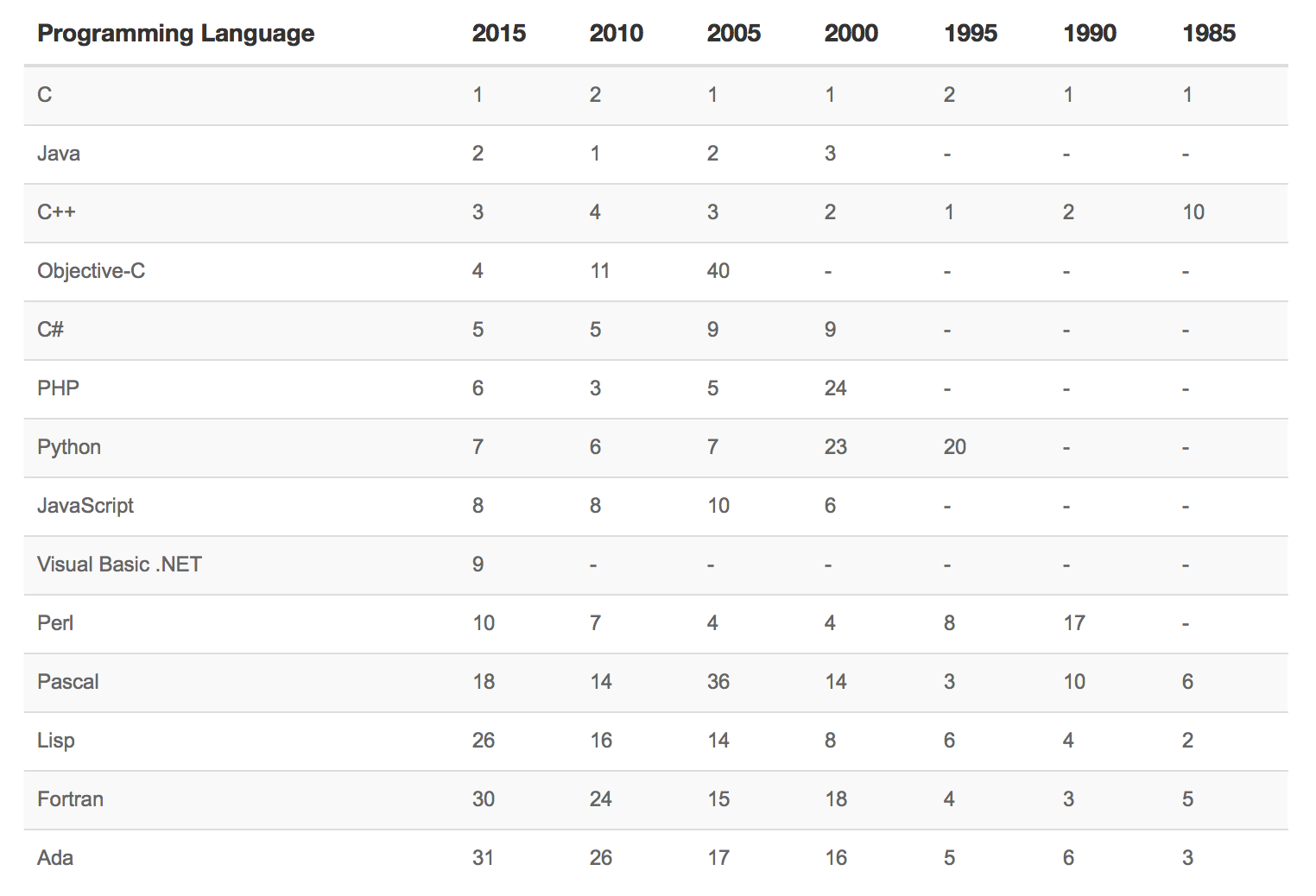 Programming Language Hall of Fame
Programming Language Hall of Fame
The hall of fame listing all "Programming Language of the Year" award winners is shown below. The award is given to the programming language that has the highest rise in ratings in a year.
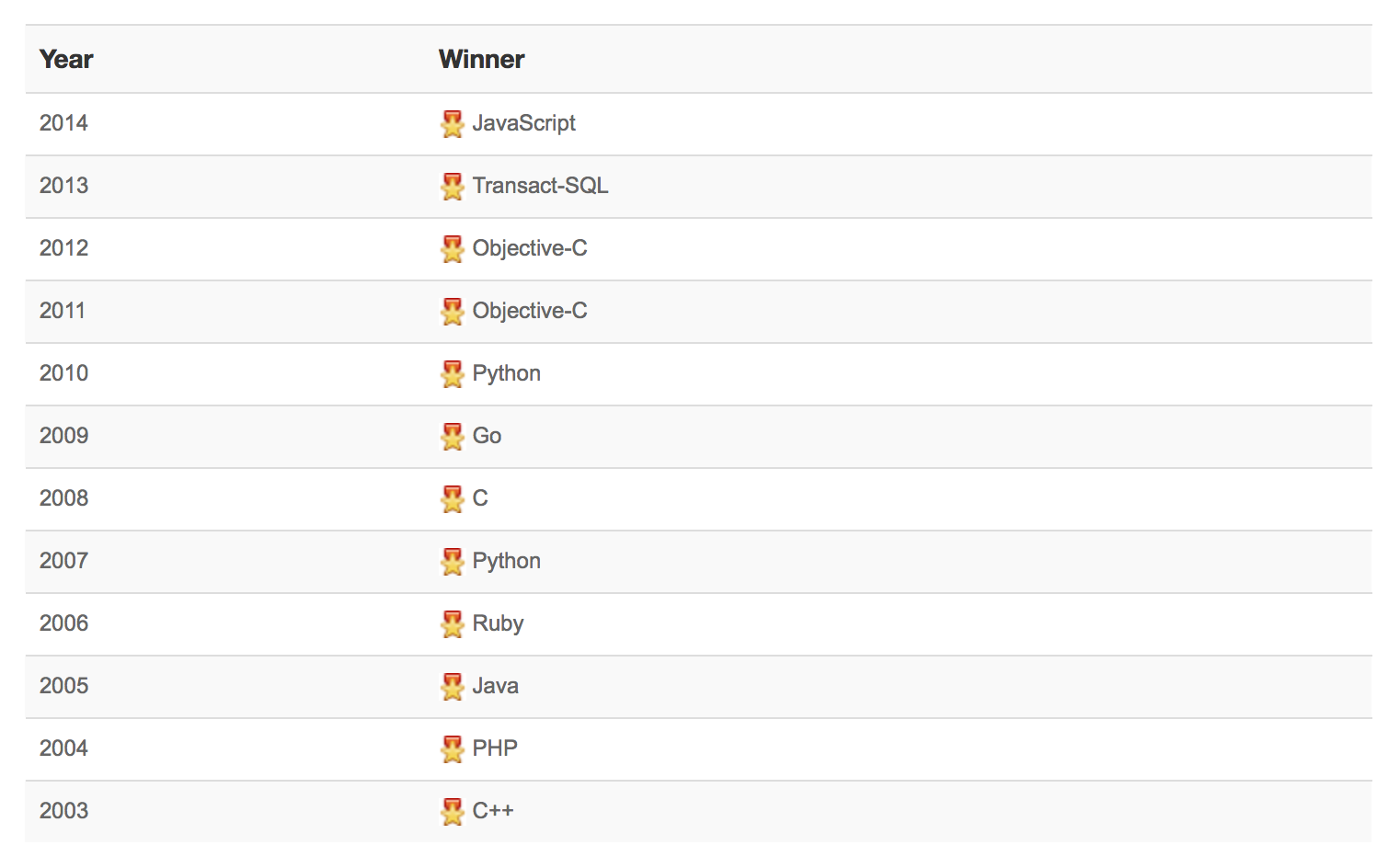 Bugs & Change Requests
Bugs & Change Requests
This is the top 5 of most requested changes and bugs. If you have any suggestions how to improve the index don't hesitate to send an e-mail to tpci@tiobe.com.
1 Apart from "<language> programming", also other queries such as "programming with <language>", "<language> development" and "<language> coding" should be tried out.
2 Add queries for other natural languages (apart from English). The idea is to start with the Chinese search engine Baidu. This has been implemented partially and will be completed the next few months.
3 Add a list of all search term requests that have been rejected. This is to minimize the number of recurring mails about Rails, JQuery, JSP, etc.
4 Start a TIOBE index for databases, software configuration management systems and application frameworks.
5 Some search engines allow to query pages that have been added last year. The TIOBE index should only track those recently added pages.
Frequently Asked Questions (FAQ)
▪
Q: Am I allowed to show the TIOBE index in my weblog/presentation/publication? A: Yes, the only condition is to refer to its original source "www.tiobe.com".
▪
Q: How may I nominate a new language to be added to the TIOBE index? A: If a language meets the criteria of being listed (i.e. it is Turing complete and has an own Wikipedia entry that indicates that it concerns a programming language) and it is sufficiently popular (more than 10,000 hits for the exact match +"<language> programming" for Google), then please write an e-mail to tpci@tiobe.com.
▪
Q: I would like to have the complete data set of the TIOBE index. Is this possible? A: We spent a lot of effort to obtain all the data and keep the TIOBE index up to date. In order to compensate a bit for this, we ask a fee of 5,000 US$ for the complete data set. The data set runs from June 2001 till today. It started with 25 languages back in 2001, and now measures more than 150 languages once a month. The data are availabe in comma separated format. Please contact sales@tiobe.com for more information.
▪
Q: Why is the maximum taken to calculate the ranking for a grouping, why not the sum? A: Well, you can do it either way and both are wrong. If you take the sum, then you get the intersection twice. If you take the max, then you miss the difference. Which one to choose? Suppose somebody comes up with a new search term that is 10% of the original. If you take the max, nothing changes. If you take the sum then the ratings will rise 10%. So taking the sum will be an incentive for some to come up with all kinds of obscure terms for a language. That's why we decided to take the max.
The proper way to solve this is is of course to take the sum and subtract the intersection. This will give rise to an explosion of extra queries that must be performed. Suppose a language has a grouping of 15 terms, then you have to perform 32,768 queries (all combinations of intersections). So this seems not possible either... If somebody has a solution for this, please let us know.
▪
Q: What happened to Java in April 2004? Did you change your methodology? A: No, we did not change our methodology at that time. Google changed its methodology. They performed a general sweep action to get rid of all kinds of web sites that had been pushed up. As a consequence, there was a huge drop for languages such as Java and C++. In order to minimize such fluctuations in the future, we added two more search engines (MSN and Yahoo) a few months after this incident.
Q: Why is YouTube used as a search engine for the TIOBE index? A: First of all, YouTube counts for less than 10% of all ratings, so it has hardly any influence on the index. YouTube has been added as an experiment. It qualified for the TIOBE index because of its high ranking on Alexa. YouTube is a young platform (so an indicator for popularity) and there are quite some lectures, presentations, programming tips and language introductions available on YouTube.
Source:TIOBE Software


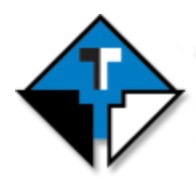 TIOBE Software
TIOBE Software





